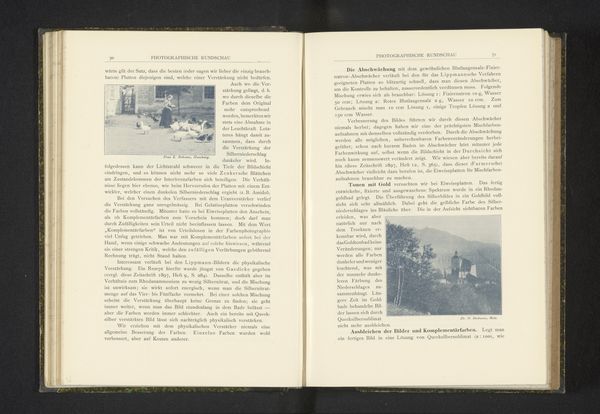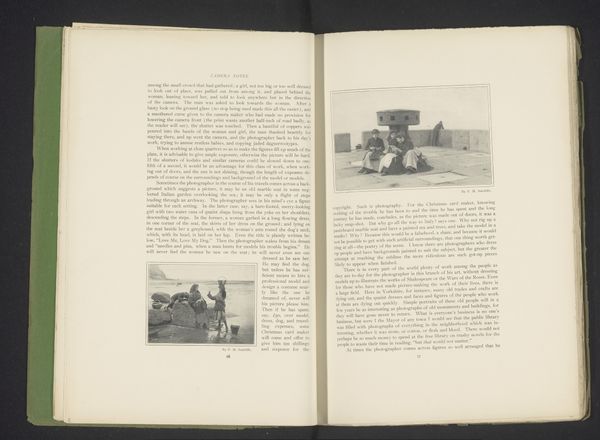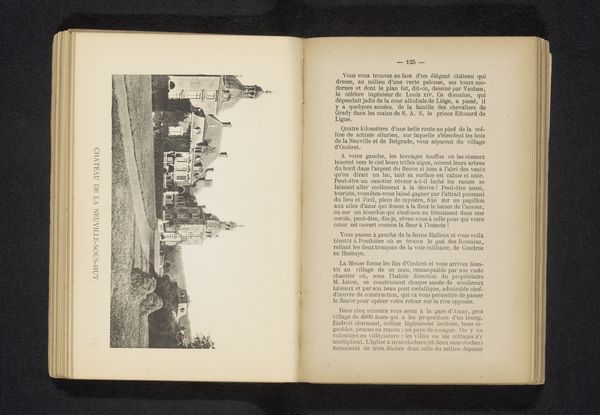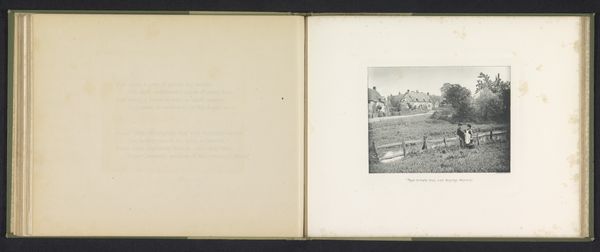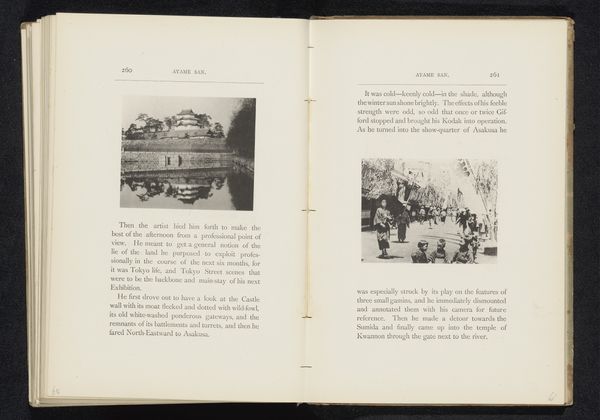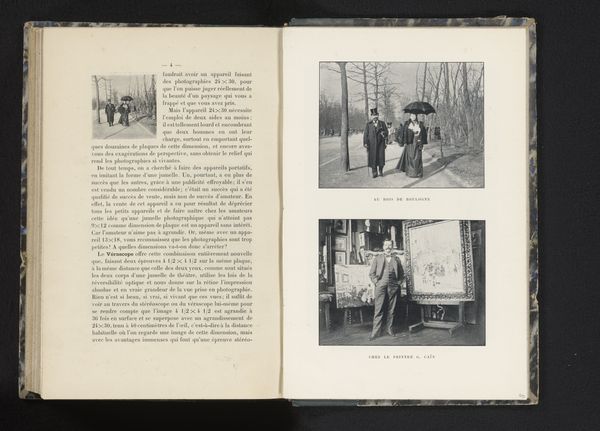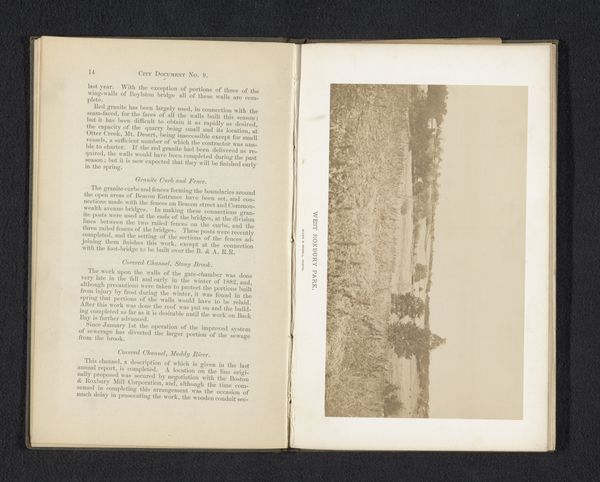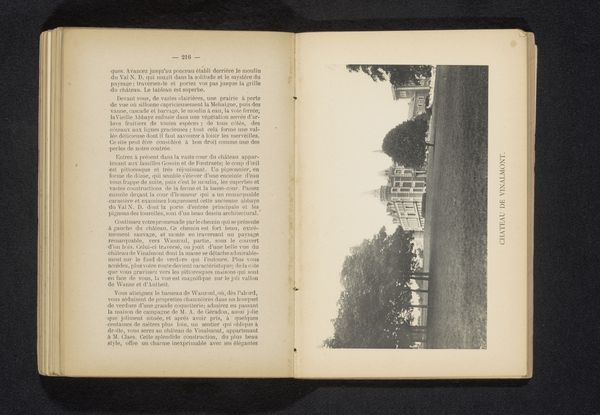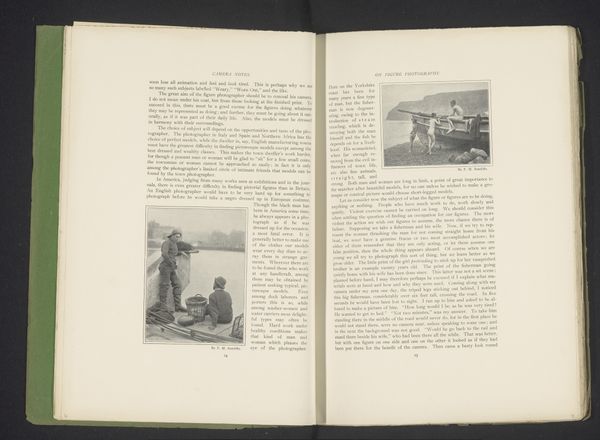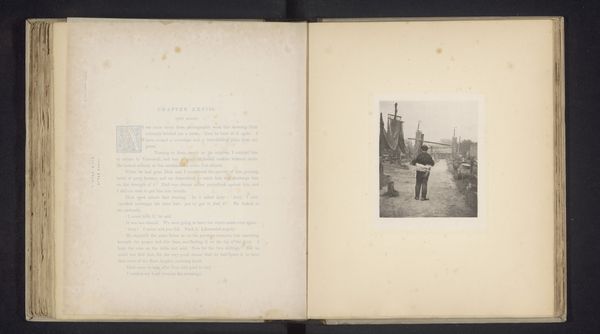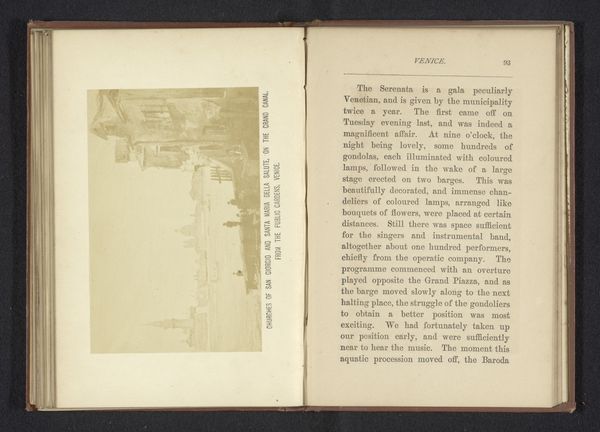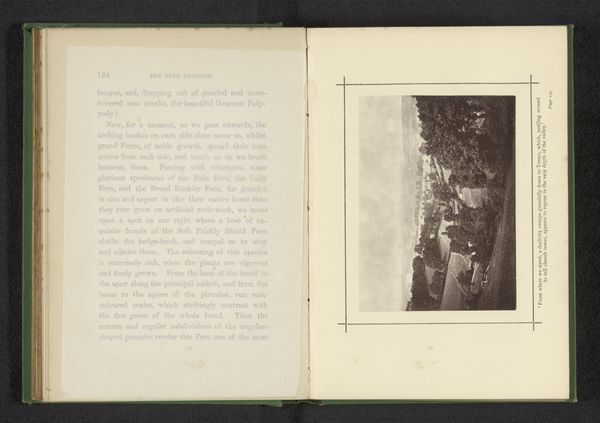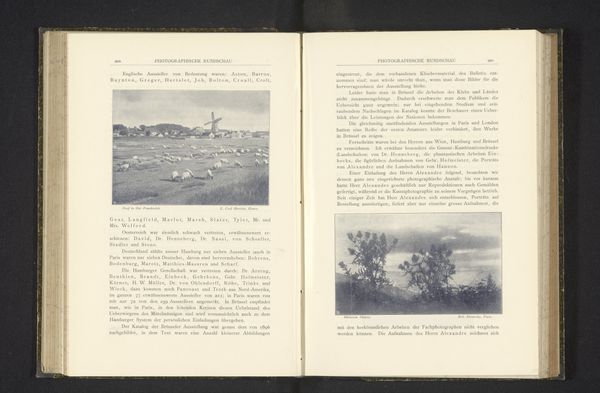
Plaat met twee afdrukken, boven van twee onbekende mannen en een onbekende vrouw bij een fontein en onder van een onbekende man in een landschap met schapen before 1892
0:00
0:00
print, photography, photomontage
#
pictorialism
# print
#
landscape
#
photography
#
photomontage
#
cityscape
Dimensions: height 191 mm, width 121 mm
Copyright: Rijks Museum: Open Domain
Editor: This is a print called "Plaat met twee afdrukken, boven van twee onbekende mannen en een onbekende vrouw bij een fontein en onder van een onbekende man in een landschap met schapen," made before 1892, credited to Brunner & Hauser. It’s a photomontage, quite interesting how they combined these different scenes. What strikes you most about this composition? Curator: As a materialist, I find it crucial to consider the processes of production at play here. The fact that it is a photomontage suggests a certain fragmentation of experience, and perhaps a commentary on the increasing accessibility of photographic technologies. Editor: Fragmentation... that's a very interesting point of view! What do you mean by that? Curator: Well, the juxtaposition of these seemingly unrelated scenes forces us to confront the constructed nature of photographic "reality." Consider how materials shaped accessibility to image-making in the late 19th century. What did it mean for people to encounter the world through these reproducible images? Was photography democratizing, or simply offering another layer of capitalist control and objectification? Editor: So you see the piece as a comment on photography’s role in society at that moment? How its reproducible nature changed our interaction with, or perhaps commodified, daily life and labor? Curator: Exactly! I would consider the working conditions in photographic studios at the time, and how this impacts the production of imagery and the relationship between artistic vision, craft and commerce. The division of labor within the studio, the mass production of images - these factors influence what we see. Do you see the cityscape and the landscape reflecting distinct social classes, urban versus rural work? Editor: Now that you point that out, the deliberate arrangement creates that visual tension between different experiences of life... Thanks for expanding my way of seeing the work, connecting it with production and societal structures. Curator: Indeed! Thinking about art through the lens of material conditions brings us closer to understanding its complexities and nuances in culture and class.
Comments
No comments
Be the first to comment and join the conversation on the ultimate creative platform.
